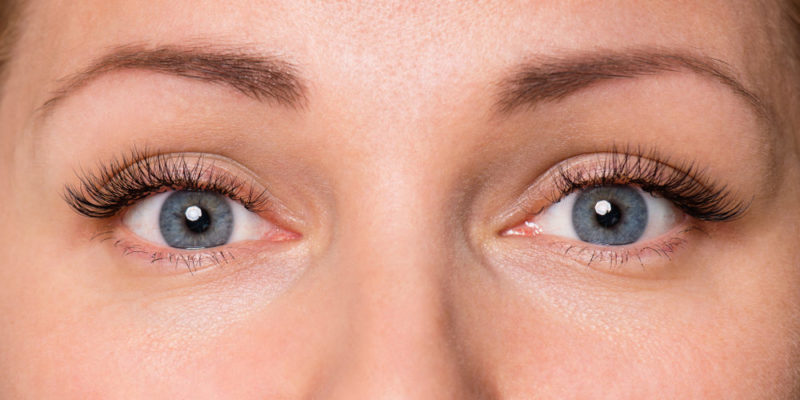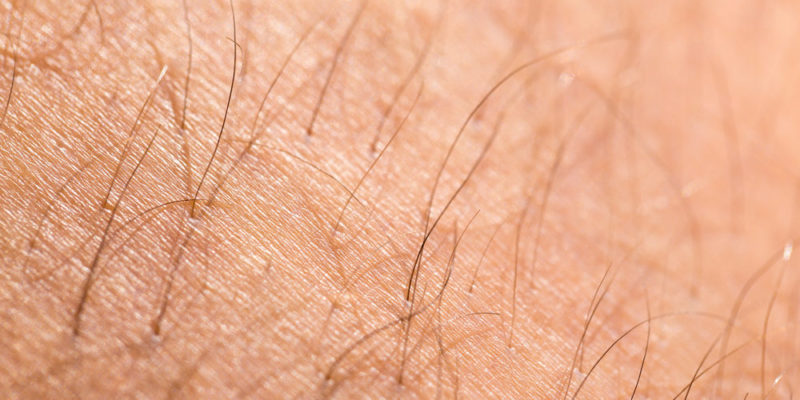We explain what skin is, how its structure and thickness are. Also, what are its characteristics and its ability to repair itself.
What is skin?
The skin is the largest organ in the human body . In an adult, this organ can measure almost 2 meters square. It is made up of two layers: the epidermis and the dermis . Beneath these two layers is a stratum (subcutaneous stratum) called the hypodermis .
In the innermost part of the skin, cells are formed that progressively approach the outer layers, losing their nucleus and becoming loaded with keratin. In this way they can form a layer of protection for the body. However, this layer is constantly under renovation.
The considerable loss of a portion of skin can lead to the death of the person.
Characteristics of the skin :
Layers
As we have said above, the skin is made up of 2 layers.
- Epidermis. It is the outermost and thinnest layer of the skin. This layer is completely replaced every 2 or 3 weeks. It is subdivided into different strata or layers:
- Stratum corneum. It consists of about 15 to 20 layers of horny cells . The outermost layer of this is brittle and contains old cells that are shed from the skin, giving rise to the arrival of new cells.
- Lucid cloak. It is made up of a single row of flattened cells without a nucleus .
- Grainy layer. In these layers are the cells with a presence in the cytoplasm of high protein content.
- Basal layer. The cells that compose it have a cylindrical and cubic shape and have great elasticity.
- Thorny coat. They are cells with a polygonal shape with a central nucleus and are surrounded by basal cells.
- Dermis. It is the layer that continues to the epidermis. It is formed by a network of protein fibers , mostly collagen . The dermis is strong and thick but, at the same time, it is flexible, thanks to the elastin , a protein it contains. It is, in turn, divided into:
- Papillary dermis. It has a constant contact and exchange with the epidermis.
- Reticular dermis. It is the deepest and thickest layer of the dermis.
-
Hypodermis
Genetically speaking, this hypodermis is thicker in women than in men . It is made up of adipocytes that store fat . Basically the hypodermis is responsible for storing fat, serves as an energy deposit and is a thermal insulator of the body.
Hydrolipic film
This film is found in the skin layer, made up of water and fat . This film provides elasticity and protects the skin from bacteria and fungi . Its PH is slightly acidic: between 5.4 and 5.9. It is this acidity (made up of bacterial flora) that makes it a protective layer for microbes.
-
Thickness
 The thickness of the skin will vary according to the area of the body that it covers. Thus, in the area of the face or hands it is 0.02 mm and in the feet it can measure between 1 and 5 mm. In the areas around the eyes and on the eyelids, it can reach a thickness of 0.004 mm. On average the skin is 0.01 mm thick.
The thickness of the skin will vary according to the area of the body that it covers. Thus, in the area of the face or hands it is 0.02 mm and in the feet it can measure between 1 and 5 mm. In the areas around the eyes and on the eyelids, it can reach a thickness of 0.004 mm. On average the skin is 0.01 mm thick.
Flexibility and impermeability
The skin is flexible thanks to the elastin that the dermis has . However, over the years this elasticity can be lost giving rise to the well-known wrinkles of the skin.
On the other hand, the skin is waterproof, that is, it prevents the passage of fluids and substances, thus protecting the internal organs of the body.
-
Thermostat
 One of the distinguishing characteristics of the skin is that it serves as a regulator of body temperature . Thus, and by sweating the skin, it can allow water to escape through the sweat glands.
One of the distinguishing characteristics of the skin is that it serves as a regulator of body temperature . Thus, and by sweating the skin, it can allow water to escape through the sweat glands.
The role of melanin
Melanin is the substance responsible for the coloring of our skin and hair . Over the years the production of melanin can be altered. Hence, at a certain age, gray hair or spots on the hands and face begin to appear.
-
The importance of hair on the skin
 The hair on the skin helps the functions of regulating body temperature, maintaining humidity and avoiding damage from external agents such as UV rays, environmental pollution or germs that may be present in the air . On the other hand, the sensory function is expressed through the sense of touch .
The hair on the skin helps the functions of regulating body temperature, maintaining humidity and avoiding damage from external agents such as UV rays, environmental pollution or germs that may be present in the air . On the other hand, the sensory function is expressed through the sense of touch .
Calcium fixation

The vitamin D, essential for the health of the body, you can only fix it by skin contact with the rays of the sun. Thus, the skin involved in the synthesis of vitamin D .
-
Self repair ability
The above content published at Collaborative Research Group is for informational and educational purposes only and has been developed by referring reliable sources and recommendations from technology experts. We do not have any contact with official entities nor do we intend to replace the information that they emit.
Abubakr Conner brings a diverse skill set to our team, and covers everything from analysis to the culture of food and drink. He Believes: "Education is the most powerful weapon that exists to change the world." .
Leave a reply
Your email address will not be published. Required fields are marked *Recent post

Sport: What Is It, Types, Risks, Features, Characteristics and Examples

Dogs: Emergence, Features, Characteristics, Feeding and Breeds

Story: Definition, Elements, Structure, Features and Characteristics

